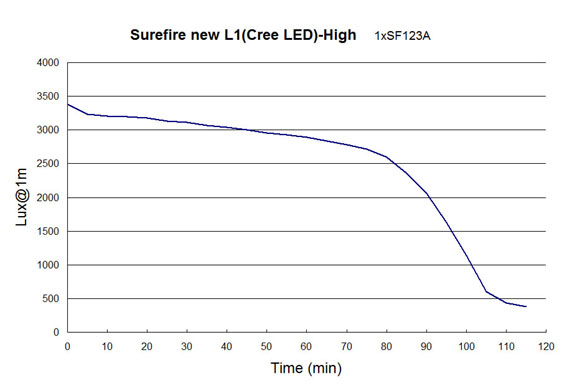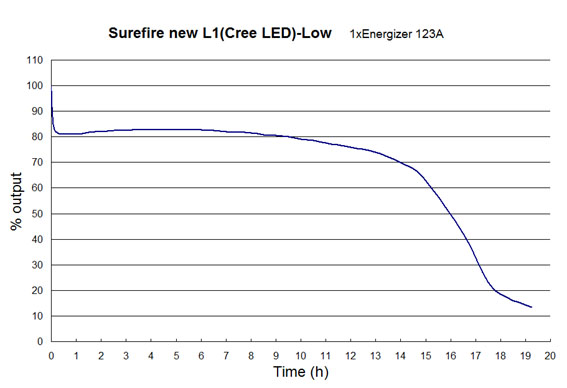skalomax
Flashlight Enthusiast
Does anybody other than Chao have a cree Surefire L1 runtime graph on high?
Thanks
Thanks
 Help Support Candle Power Flashlight Forum
Help Support Candle Power Flashlight Forum
found this runtime for the L1 cree but with rechargeables:
http://www.candlepowerforums.com/vb/showpost.php?p=2140499&postcount=74
that's probably not what your looking for
couldn't find any info on primaries other than Chao's, but if i do find something, i'll post it here.
Chao's L1 runtime graph is the Surefire L1 Cree. Has there been a change in Surefire L1 Cree?
Bill
Got them today :twothumbs, new Cree L1 is just a little bit longer than E1L, the new TIR optics is very cool, produces round hot spot and useful sidespill.
...7/12 updated..........................
L1 runtime-high level

...7/14 updated..........................
L1 runtime-low level

Chao's runtime graph on high mode will have more meaning when we find out what the approximate lumens are on high. We know that the approximate mA drain from the battery is 660mA's or so......As I am writing this it does seem that the L1 Cree should have a flatter runtime in regulation. The circuit is no doubt a boost circuit with maybe 500mA's or less to the led, not a difficult load for the circuit to produce with the mild mA drain from the SF CR123. Maybe we should ask Chao to repeat his runtime test?
Bill
I have never noticed a brighter flash when turning my L1 on low. If it's there it's just not enough for the brain to register (or at least my slow brain). Now if you want to see a startup flash you should see my Fenix L2Dce.
Geoff
Seems similar to this as well.
Only difference is Chao's used SF123 cell while light-reviews.com used Energizer CR123 cell.
